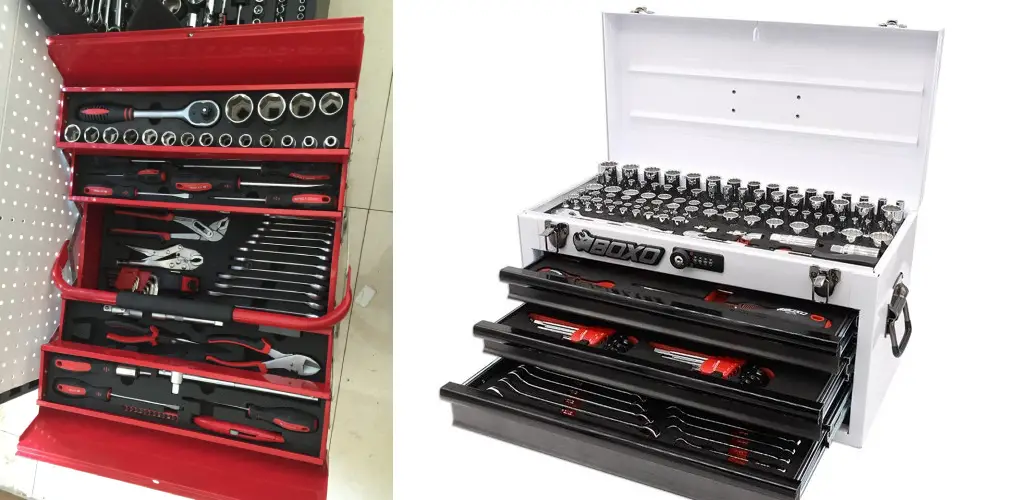Kobalt is one of the most popular brands of toolboxes on the market, and for a good reason. They’re durable, affordable, and come in various sizes to fit whatever needs you may have. But what do you do if you lose your key or somehow damage it?

Picking the lock on your Kobalt toolbox can be a bit tricky, but with a few simple steps, you can have it open in no time. In this article, we will show you how to pick a kobalt toolbox lock and give you a few tips to make the process easier. So, whether you have lost your key or just want to be able to open your toolbox without assistance, follow these steps to pick the lock on your Kobalt toolbox.
What Is Kobalt Toolbox?
Kobalt is a popular brand of toolboxes and other storage solutions. Kobalt toolboxes are known for their durability and security, but like any lock, they can be picked. So if you need to get into your Kobalt toolbox and don’t have the key, don’t worry. With a little patience and the right tools, you can pick the lock on your Kobalt toolbox.
Types of Kobalt Toolbox Locks:
There Are Two Types of Locks Commonly Used on Kobalt Toolboxes:
Pin Tumbler Locks:
Pin tumbler locks are the most common type of lock used on Kobalt toolboxes. These locks have a pin that must be lifted to the correct height in order to unlock the toolbox.
You will need a lock pick set and a tension wrench to pick a pin tumbler lock. Insert the tension wrench into the bottom of the lock and apply gentle pressure to turn the lock. Insert the lock pick into the top of the lock and begin to feel for the pins. Use the hook end of the lock pick to lift the pins until they reach the shear line. Once all the pins are in alignment, the lock will open.
Wafer Tumbler Locks:
Wafer tumbler locks are less common, but they work in a similar way to pin tumbler locks. These locks have a wafer that must be lifted to the correct height in order to unlock the toolbox. The main difference is that wafer tumbler locks have fewer pins, and they are arranged in a different way.
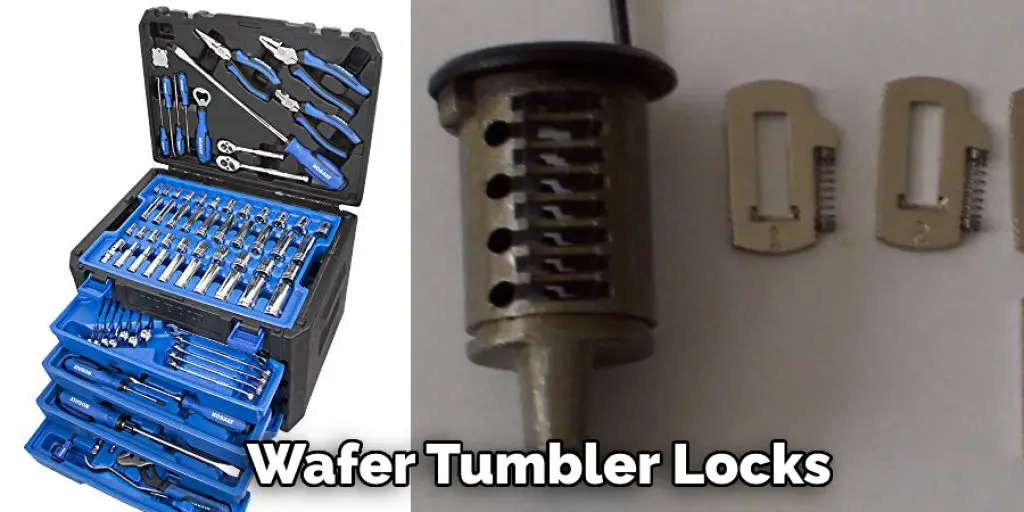
If you’re looking to pick a wafer tumbler lock, you’ll need to start by inserting a tension wrench into the keyway. Once the tension wrench is in place, you’ll need to insert a hook pick or a half diamond pick above the wafer.
You’ll then need to apply pressure to the tension wrench while manipulating the pick until you feel the wafer click into place. With the wafer in the correct position, you’ll be able to turn the lock and open the toolbox.
Tools Needed to Pick a Kobalt Toolbox Lock
- A tension wrench
- A pin tumbler pick
6 Methods on How to Pick a Kobalt Toolbox Lock:
This article will go over 6 of the most effective methods to pick this type of lock.
1. Use a Paperclip.
One of the easiest ways to How to Pick a Kobalt Toolbox Lock is by using a paperclip. You need to straighten out the paperclip and insert it into the lock. Then, apply pressure and turn the lock once you feel the paperclip catch on something. This method works best on older models of Kobalt toolboxes. The newer ones tend to have sturdier locks that are more resistant to this type of picking.
2. Use a Bump Key
A bump key is one of the most effective ways How to Pick a Kobalt Toolbox Lock. It’s also one of the cheapest and most readily available methods, as bump keys can be easily purchased online or at most hardware stores.
To use a bump key, simply insert it into the lock and apply pressure while you turn the key. The pressure will cause the pins in the lock to “bump” up, which will allow the lock to turn.
3. Use a Lock Pick Gun
A lock pick gun is a tool that’s specifically designed for picking locks. They’re relatively inexpensive and can be purchased online or at most hardware stores.
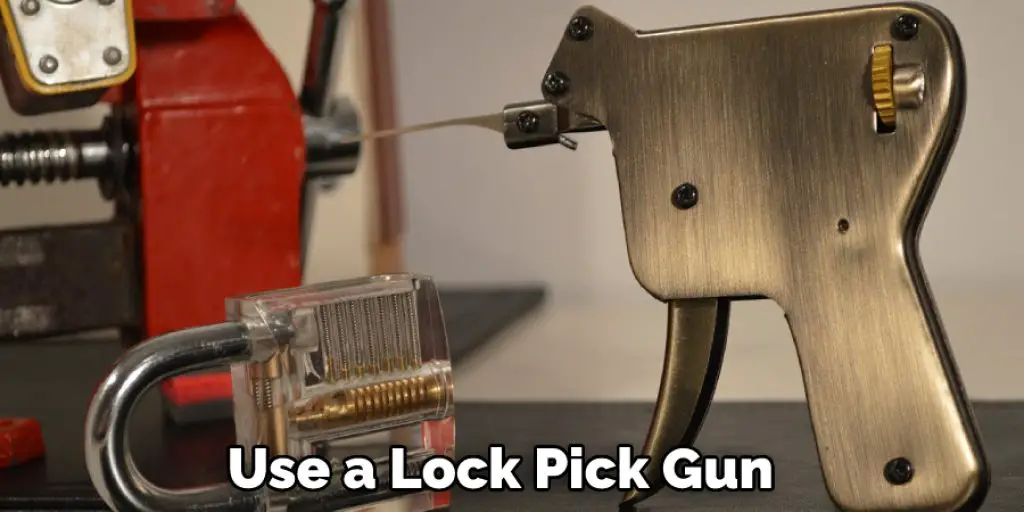
To use a lock pick gun, simply insert the gun’s tip into the lock and pull the trigger. This will cause the pins in the lock to “bump” up, which will allow the lock to turn.
4. Use a Torsion Wrench
A torsion wrench is a specialized tool that’s specifically designed for picking locks. They’re relatively inexpensive and can be purchased online or at most hardware stores.
To use a torsion wrench, simply insert the tip of the wrench into the lock and apply pressure while you turn it. The pressure will cause the pins in the lock to “bump” up, which will allow the lock to turn.
5. Use a Lock Pick Set
A lock pick set is a collection of tools that are specifically designed for picking locks. They can be purchased online or at most hardware stores. To use a lock pick set, simply insert the appropriate tool into the lock and apply pressure while you turn it.
If you don’t have a lock pick set, you can use a paperclip or bobby pin. Just bend the end of the paperclip into an “L” shape and insert it into the lock. Apply pressure and turn. With a little patience, you should be able to open the lock.
6. Use a Screwdriver
If all else fails, you can always try picking the lock with a screwdriver. Simply insert the tip of the screwdriver into the keyhole and apply pressure while you turn. If you’re lucky, the mechanism will catch, and the lock will open. However, be careful not to apply too much pressure, as you could damage the lock.
With these six methods, you should be able to pick any Kobalt toolbox lock. Remember to practice beforehand so that you don’t damage the lock. And if all else fails, you can always call a locksmith.
You Can Check It Out to Pick a Tool Box Lock
How to Change the Lock on a Kobalt Toolbox?
Here’s What You’ll Need:
- A small flathead screwdriver
- A medium flathead screwdriver
- A hammer
- A paperclip or other thin piece of metal
First, start by unscrewing the two screws that hold the lock in place. You’ll need to use the small flathead screwdriver for this. Once the screws are removed, the lock will be loose. Next, use the medium flathead screwdriver to pry open the cover of the lock. You may need to use a little bit of force to get it open.
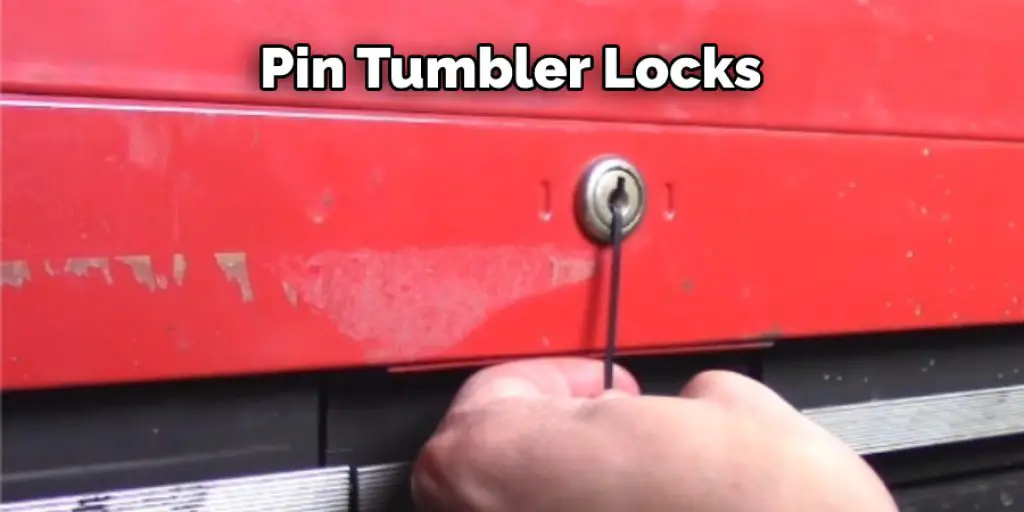
Once the cover is off, you’ll see the locking mechanism inside. Take your piece of metal and insert it into the hole in the center of the locking mechanism. Push down on the metal until you hear a click. This will release the locking mechanism and allow you to remove the lock from the toolbox.
You can change the locks on your toolbox whenever you need to. This is a great way to keep your tools safe and secure.
How Do You Unlock a Kobalt Toolbox Lock Without a Key?
If you have lost the key to your Kobalt toolbox, or if the key has become damaged and will no longer open the lock, you may be wondering how to unlock a Kobalt toolbox without a key. Luckily, there are a few different ways that you can do this.
One way to unlock a Kobalt toolbox without a key is to use a bobby pin. Start by unbending the bobby pin so that you have a long, thin piece of metal. Then, insert the bobby pin into the lock above the keyhole. Next, push down on the bobby pin and turn it to the left. The lock should pop open.
Can a Locksmith Make a New Toolbox Key From the Lock?
Yes, a locksmith can make a new toolbox key from the lock. Locksmiths are trained to create a new key for a lock even without the original key.
They use specialized tools to decode the lock’s pins and tumblers and then cut a new key that matches the specific pattern of the lock’s internal mechanism. It’s important to note that the locksmith will need to have access to the lock to create a new key. If the lock has been damaged or is too old, it may be more effective to replace the lock altogether simply.
How Do You Open a Toolbox Locked With a Padlock?
If you have a toolbox locked with a padlock, you will need to have the correct key or combination to open it. Here are the steps to follow:
- Test the lock – Sometimes, padlocks can get stuck or rusted, preventing them from opening. Before attempting to access the contents, ensure that the lock is functioning correctly.
- Check for a key – If the lock is a keyed padlock, search for the key that matches the lock. Once you locate it, insert it into the lock and turn it, the lock should unlock.
- Enter the combination – If the lock is a combination padlock, enter the correct combination. Make sure you align the numbers correctly, turn the dial left, and then right or right, and then left until the lock clicks open.
- Call a locksmith – If you have lost the key or forgotten the combination, you can call a professional locksmith to help you unlock your toolbox.
Remember always to keep your toolbox locked when not in use for added security.
Some Tips and Suggestions
- Start by unscrewing the two screws that hold the lock in place. You’ll need to use the small flathead screwdriver for this.
- Once the screws are removed, the lock will be loose. Next, use the medium flathead screwdriver to pry open the cover of the lock. You may need to use a little bit of force to get it open.
- Take your piece of metal and insert it into the hole in the center of the locking mechanism. Push down on the metal until you hear a click. This will release the locking mechanism and allow you to remove the lock from the toolbox.
- Now that you can change the combination to whatever you like. Just remember to write it down somewhere, so you don’t forget it.
- To replace the lock, simply insert it back into the hole and screw the two screws back in. Make sure that the cover is securely fastened before you put your tools back in the box.
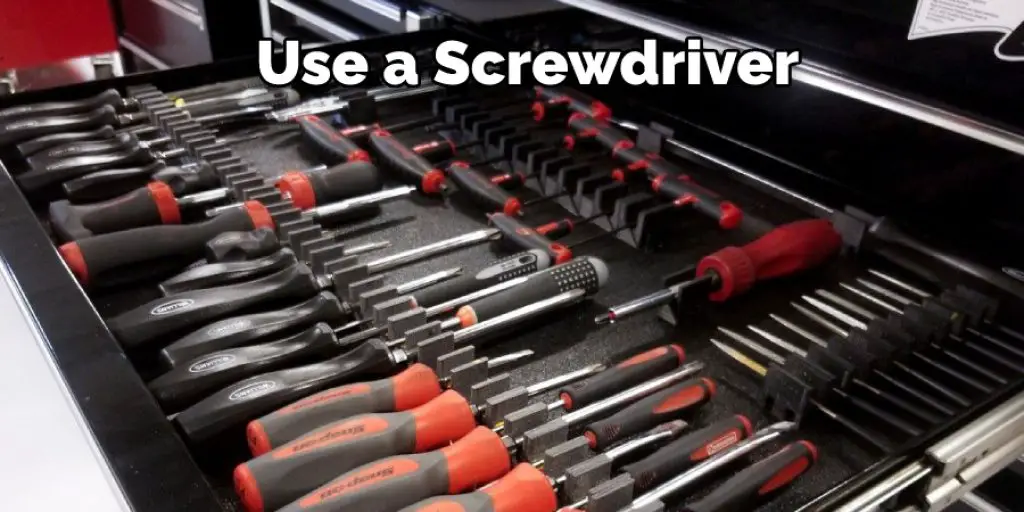
Conclusion
A Kobalt toolbox is an excellent investment for anyone who does DIY projects or repairs around the house. Not only are they sturdy and well-constructed, but they come with a variety of features that make them versatile and useful.
However, one downside to Kobalt tool boxes is that the locks can be tricky to open if you don’t know how they work. In this post, we’re going to show you how to pick a kobalt toolbox lock to get into your box when you need to without having to call a professional.

